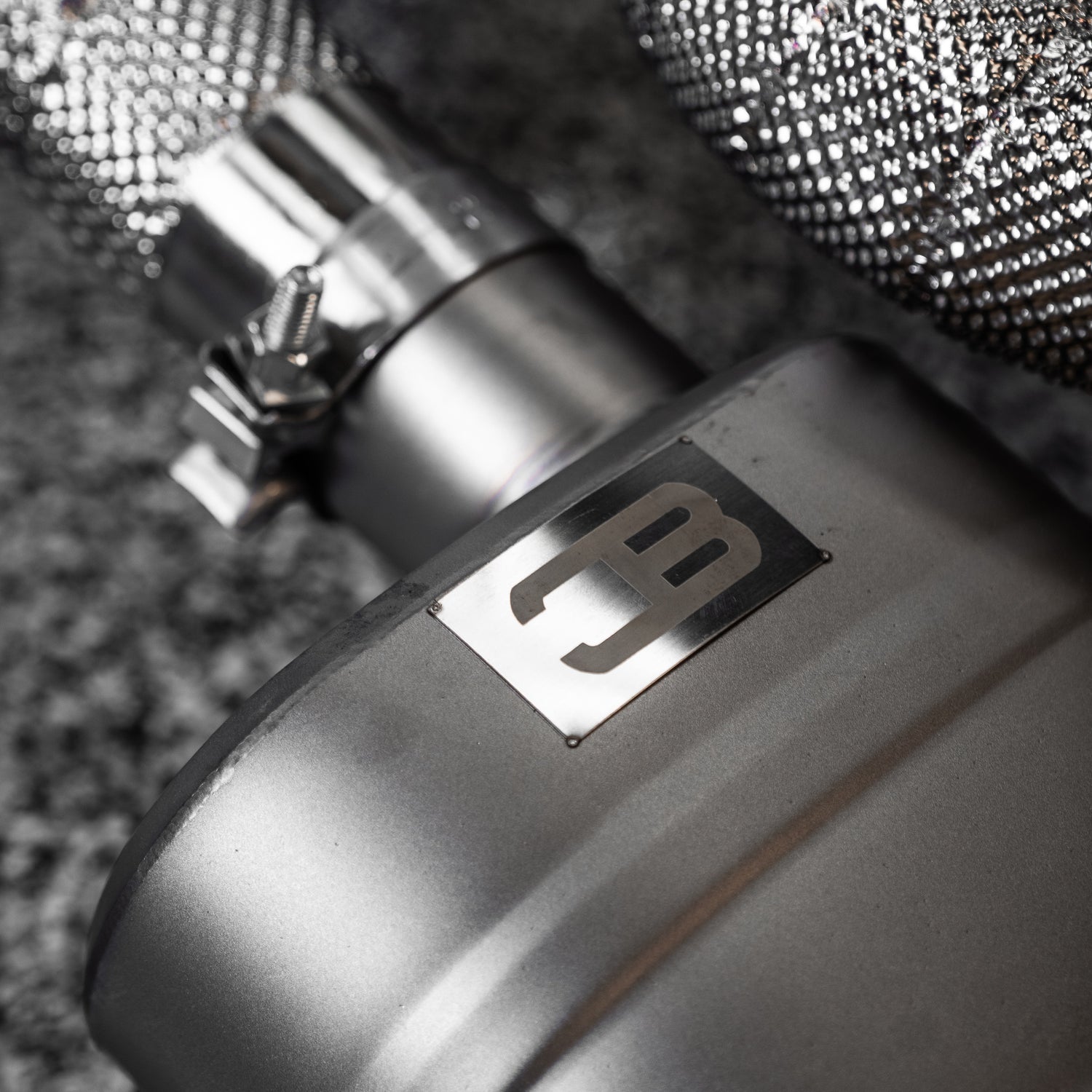
How Aftermarket Exhausts Achieve Weight Reduction and Performance Gains
Automotive engineers often face a trade-off between weight and performance when designing stock exhausts. They must meet noise regulations and cost targets, which leads to heavy mufflers, smaller diameter pipes, and sometimes restrictive catalytic converters. Aftermarket performance exhausts like those from CB Customs take a different approach – prioritizing lightweight design and unchoked flow, which yields improvements in both weight and engine performance. Here’s how we achieve these gains:
-
Mandrel-Bent, Optimized Piping: We use mandrel bending to shape our exhaust pipes, ensuring the diameter stays consistent through bends. This avoids the crimping and narrowing that you see in some factory exhaust bends. A consistent, larger diameter pipe reduces backpressure. The engine doesn’t have to work as hard to push out exhaust gases, freeing up horsepower. Especially at higher RPMs or when running higher boost (on turbo cars), this freer flow allows for more air throughput. The result can be measurable horsepower and torque gains – for example, aftermarket exhausts on performance cars routinely add on the order of 5% or more power. (As mentioned earlier, a quality cat-back and tune can often yield ~10% gains; MagnaFlow estimates around 10% increase from a full exhaust upgrade under optimal conditions.) Additionally, we often eliminate or reduce resonators and secondary catalytic converters (where legal) to further open the flow. Less restriction = more power.
-
High-Flow or Valved Mufflers: Rather than the complex, baffling-heavy mufflers on many stock cars, we use straight-through high-flow muffler designs. These absorb sound with packing material (like fiberglass or steel wool) instead of forcing the exhaust through zig-zag chambers. The straight-through design dramatically cuts backpressure while still taming harsh noise. In many of our systems, we incorporate valves as well – this means you can have an essentially straight-pipe path (valve open for maximum flow and sound) or a muffled path (valve closed for quieter operation) in one exhaust. The performance benefit is you’re not permanently compromising flow for sound; you can have loud and free-flowing when you want performance, and quiet when cruising. It’s a technology also used by competitors like Valvetronic and Armytrix, who highlight how valved systems bring “unprecedented versatility” – loud or quiet on demand. Our valved systems are designed to default to the optimal flow in performance mode, essentially giving you the best of both worlds without the weight of two separate exhausts.
-
Lightweight Materials and Construction: Weight reduction is a core goal in our exhaust design. Using materials like thin-wall T304 stainless steel tubing or titanium, we remove a lot of the mass that’s in a stock exhaust (factory systems often use thick, mild-steel pipes and bulky mufflers for cost reasons and longevity). By comparison, a titanium system can be astonishingly light – some examples are more than one-third lighter than stock. Even our stainless systems are crafted with an aim to shed pounds: fewer unnecessary bends, smaller muffler cans (or none at all in some race-oriented setups), and deleting heavy stock components like resonators or valve actuators (when not needed). As mentioned, a lighter exhaust, especially one that sits toward the upper or rear parts of the car, lowers the center of gravity and overall weight. This improves acceleration, braking, and handling. The difference might be a few tenths off your track lap time or a subtle improvement in how eagerly the car changes direction, but it all contributes to a more focused driving experience. For context, enthusiasts often cite that ~100 lbs weight reduction can cut a tenth of a second off quarter-mile time – while an exhaust alone won’t drop 100 lbs, it contributes a chunk towards that goal in a single mod. And unlike removing interior trim or sound deadening, an exhaust drops weight without compromising the comfort or functionality of your car.
-
Tuned Sound = Driver Confidence: This is a lesser-considered aspect of performance – the psychological benefit. A robust, aggressive exhaust note can actually make you a more confident driver on track or spirited drives. You can hear the engine’s response more clearly, which helps with timing shifts and gauging throttle. The sound feedback often encourages drivers to exploit the engine’s potential. It’s no coincidence that race cars run loud exhausts; beyond performance, it’s feedback for the driver. With our systems, you’ll hear a clear, strong note that rises with RPM, helping you instinctively know when to shift. This won’t show up in a dyno chart, but out on the road or track, it contributes to exploiting the performance gains you’ve unlocked.
In summary, aftermarket exhausts achieve performance gains by improving airflow and reducing weight simultaneously. Each aspect reinforces the other – better flow gives more power, and lighter weight amplifies the effect of that power. The end result is a car that not only feels more powerful, but is more capable. At CB Customs, every exhaust we sell – be it stainless or titanium – is designed with these principles in mind: maximum efficiency, minimum weight, and an exhilarating sound as the cherry on top. Your car will breathe easier, move quicker, and sound fiercer, all in one upgrade.
(Technical tidbit: Modern sports cars with turbo engines benefit enormously from exhaust upgrades on the downpipe (the section after the turbo). While our cat-back systems avoid touching emissions equipment, pairing a high-flow downpipe with a CB Customs cat-back can unleash even more significant gains for turbo vehicles. We always advise checking local regulations for street use, but for off-road or track, a full turbo-back exhaust plus tune can transform a turbocharged car.)
